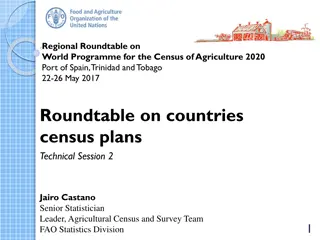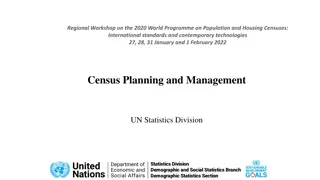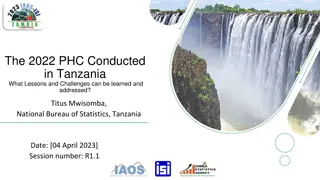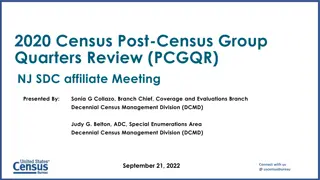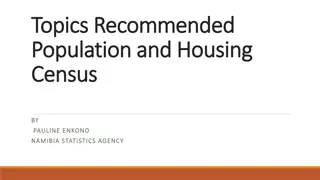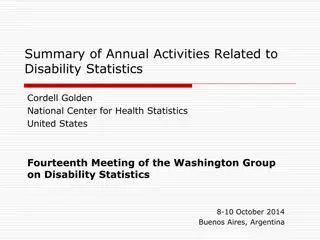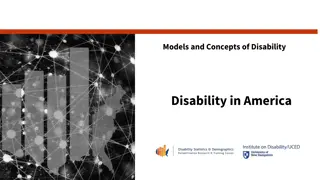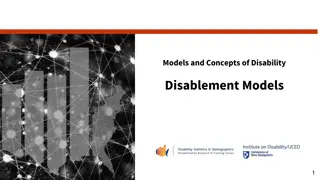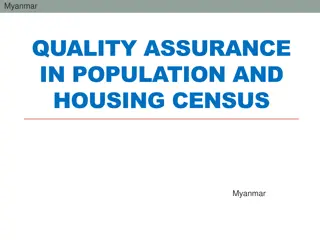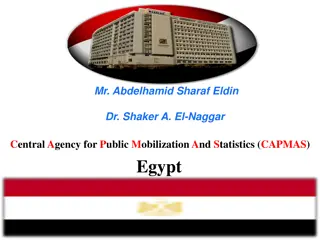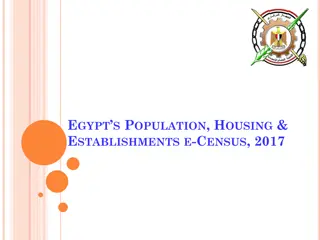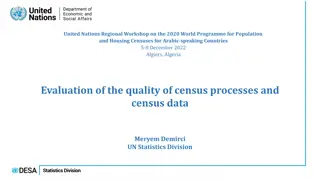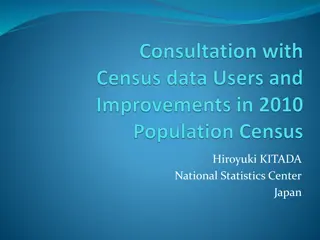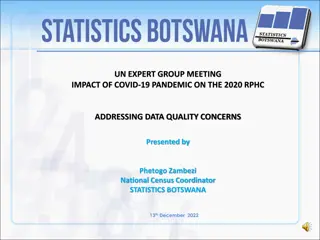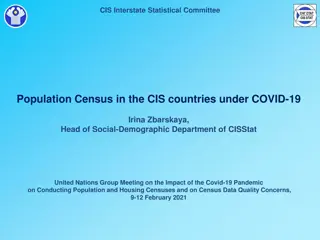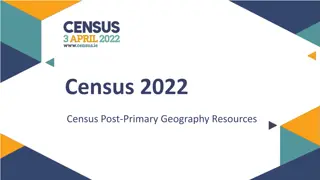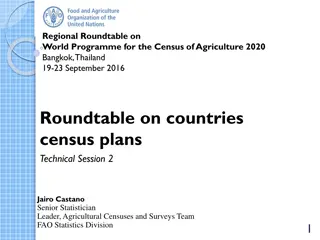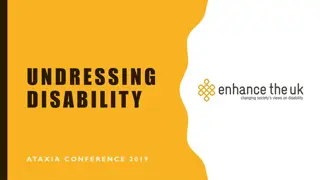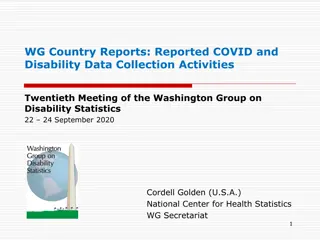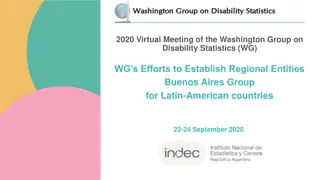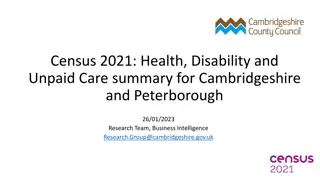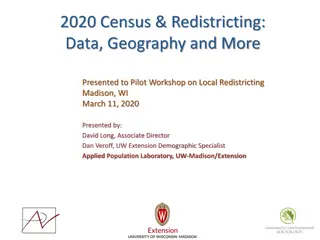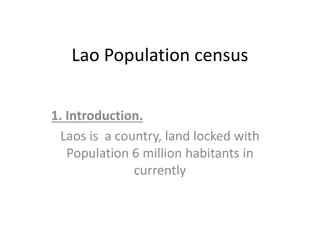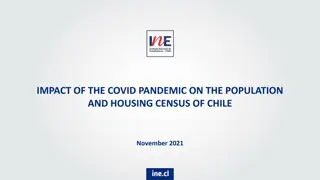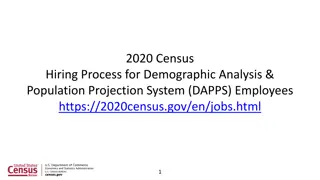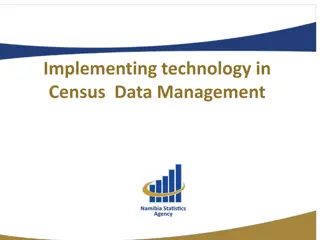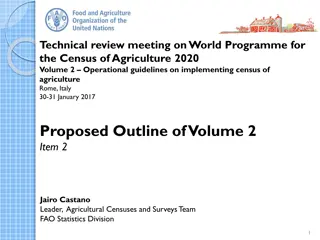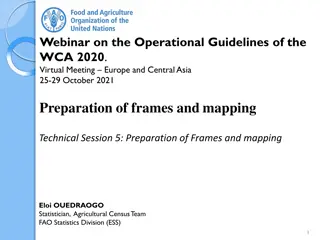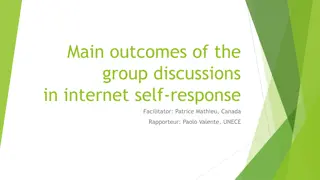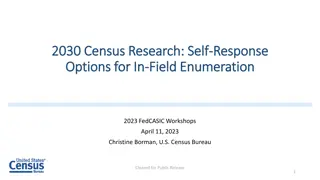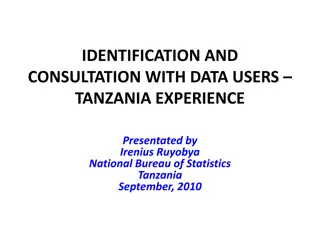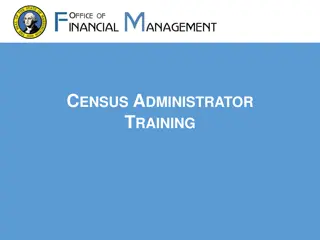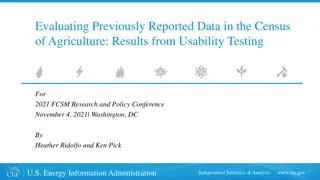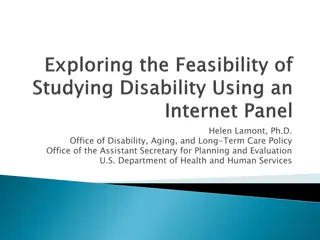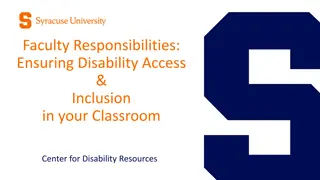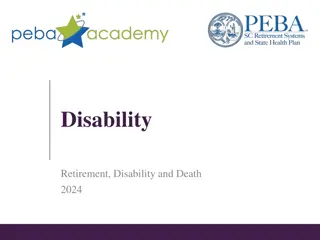Development and Testing of 2018 Census Content on Disability
The 2018 Census program underwent thorough assessment, consultation, and testing to enhance the content for capturing disability-related data. The process involved public engagement, question development, cognitive testing, and evaluation of proposed changes to ensure the value, relevance, and quality of information gathered. Various testing stages with sample groups and dissemination methods were employed to refine the content for the upcoming census.
Download Presentation

Please find below an Image/Link to download the presentation.
The content on the website is provided AS IS for your information and personal use only. It may not be sold, licensed, or shared on other websites without obtaining consent from the author. Download presentation by click this link. If you encounter any issues during the download, it is possible that the publisher has removed the file from their server.
E N D
Presentation Transcript
Presentation 2a 2018 Census content development Disability 1
2018 Census content review The programme has undertaken an assessment and consultation on the content for the 2018 Census This has been followed by our testing programme which informed the final content recommendations A refresh of content was necessary given the previous no change census models Need for the information collected in the census to remain relevant, while retaining the value of longitudinal data
The stages to determine 2018 content 2013 Census content Public engagement and consultation Assessment of formal submissions Question development and cognitive testing 2015-2016 Continuing question development and public tests during 2016-17 Government Statistician makes final decision on 2018 Census content
Content determination Does the proposed change add value to New Zealand's society and economy? Is the census the most appropriate information source? Does the proposed change reflect an enduring information need? Will the proposed change produce quality information? Is there continuity with previous census data? Is data consistent with other data collections? Is there general acceptance of the proposed change? Would the proposal questions be easy for respondents to complete?
Content to questionnaire testing Cognitive testing to assess whether new and changed content is suitable for a self-completed questionnaire A number of topics did not progress past cognitive testing
Testing programme March 2016 July 2016 April 2017 Experimental design Two sample groups Rescoped after the November earthquake 22,000 households 8,000 households (paper forms) 20,00 households in Whanganui Split our sample to test different approaches External reference group 23,000 people tested online forms 36% response rate Self response 32 percent before field visits 76% took part online Content focus Response rate 59% Marketing campaign, communications & community engagement tested 20% response rate 64% took part online
Washington Group Short Set Initially a matrix format was tested on paper due to uncertainty around space constraints, for the 2017 Census Test the format was revised given the space available
Other new content Usual residence one year ago Housing quality damp, mould, access to basic amenities Travel to education - usual instead of census day - educational institution address Revisions to other content eg. appliances used to heat dwelling, sector of landlord categories
Other topics explored but excluded Sexual orientation A third category for sex Gender identity Second address / residence Step-families Licence to occupy


